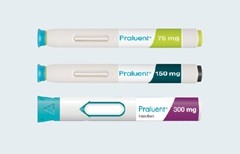It’s worth getting to know more about the different types of cholesterol and the effects of too much of what is often called ‘bad’ cholesterol, as this can help you to be healthier.1
There are two main types of cholesterol:
| LDL-Cholesterol | HDL-Cholesterol |
| Low-density lipoprotein cholesterol (LDL-C) is often referred to as ‘bad’ cholesterol. LDL-C carries cholesterol from the liver to the cells and tissues of the body. | High-density lipoprotein cholesterol (HDL-C) is often referred to as ‘good’ cholesterol. HDL-C takes cholesterol from circulation in the body to the liver where it can be broken down and disposed. |
What causes high cholesterol levels?
6 out of every 10 people in England have raised abnormal levels of blood cholesterol. Most people will have no idea they have high cholesterol levels because it usually causes no obvious signs or symptoms.2,3
The older we get, the more chance we have of developing high cholesterol levels and heart disease2: All of the things below increase the chances of having heart disease in the future.1
![]()
People with Familial Hypercholesterolaemia inherit genes that make them more likely to have too much of the bad cholesterol5.
![]()
Eating foods high in saturated fats also increases the amount of bad cholesterol in the blood1.
![]()
Having diabetes, being overweight, not keeping active, and smoking can all increase the risk of having heart disease.1.
What are the consequences of high cholesterol levels?
As LDL-C levels rise, so do your risks for cardiovascular disease, which is related to a process called atherosclerosis — a build-up of fats, cholesterol and other substances in artery walls that are called plaques.6
A build-up of plaques can disrupt the flow of blood to the heart, brain and other parts of the body leading to angina or a mini-stroke (TIA or transient ischemic attack). Plaques can rupture or break open and cause a blood clot to form, this can then completely block the artery and in turn lead to a heart attack or stroke.6

The risk of developing cardiovascular disease may also be increased by having other long lasting health concerns like diabetes and hypertension.7
References
- British Heart Foundation, Reducing your blood cholesterol. 2014. Available at: https://www.bhf.org.uk/informationsupport/risk-factors/high-cholesterol. Last accessed: June 2025.
- Heart UK. Cholesterol tests – Know your number. 2014. Available at: https://www.heartuk.org.uk/cholesterol/getting-a-cholesterol-test. Last accessed: June 2025.
- Tolonen H, et al., Prevalence, awareness and treatment of hypercholesterolaemia in 32 populations: results from the WHO MONICA Project. Int J Epidemiol 2005;34(1):181–92.
- British Heart Foundation. Focus on: Familial hypercholesterolaemia 2015. Available from: https://www.bhf.org.uk/heart-matters-magazine/medical/familial-hypercholesterolaemia. Last accessed: June 2025.
- National Heart, Lung, and Blood Institute. What is Cholesterol. Available at: http://www.nhlbi.nih.gov/health/health-topics/topics/hbc. Last accessed: June 2025.
- American Heart Association. Cardiovascular Disease and Diabetes. 2020. Available at: https://www.heart.org/en/health-topics/diabetes/diabetes-complications-and-risks/cardiovascular-disease--diabetes. Last accessed: June 2025.
Previous
HomeNext
What is Praluent?






